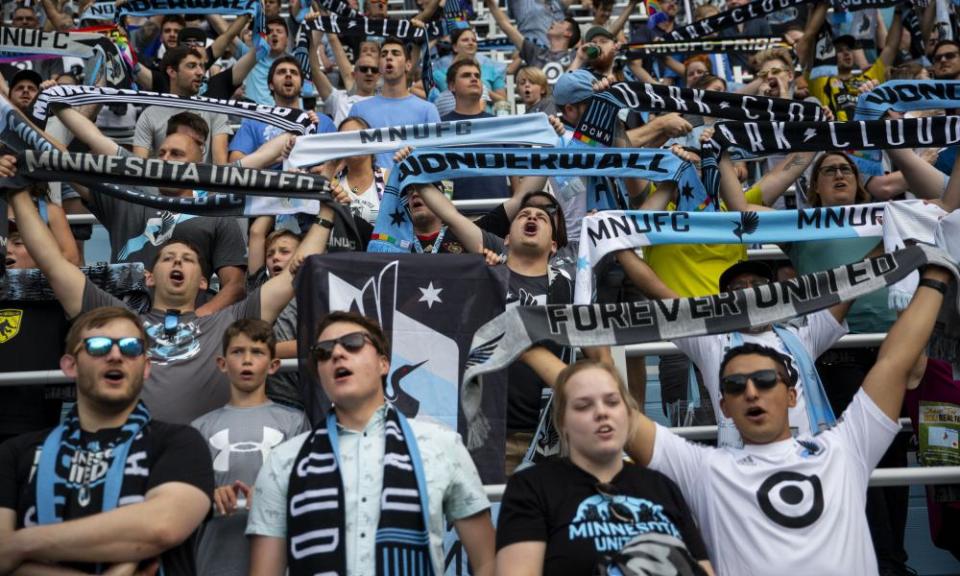MLS to become bigger than baseball? Why the need for comparison?

Every so often, Major League Soccer likes to beat its chest. Great strides have been made over the past 25 years and those associated with the league rarely miss an opportunity to outline just how much further they believe it can grow. The recent remarks of Larry Berg therefore are unsurprising, with the Los Angeles FC managing owner stating his belief that MLS “will pass baseball and hockey to become the number three sport in the US behind football and basketball.”
Such proclamations have become part of the MLS playbook. Back in 2011 the MLS commissioner, Don Garber, claimed the league would be one of the best in the world by 2022. He echoed those sentiments in 2013 and again in 2015. This unapologetic ambition has become something of a party line, as underlined by the zeal of MLS’s new breed of owners like Berg and Jorge Mas, who went even further in his prediction. “I think it will be on par with the best leagues in the world, the Premier League, Serie A, La Liga,” the Inter Miami co-owner said before his new team’s first competitive game.
But what is the intention behind such bullish statements? Have MLS bigwigs become salespeople who fail to deliver their promises? Berg’s comments, for instance, drew derision from fans who have heard it all before. And Garber’s forecast for 2022 doesn’t look likely to come true.
Related: Foreign stars, $325m fees and an eye on Mexico: MLS approaches Season 25
It’s likely that such ambition has played a part in the rapid inflation of franchise fees in recent years. The $100m paid by New York City FC for an MLS place back in 2013 was a record at the time. Now, the figure stands at an eye-watering $325m following the award of MLS’s 30th franchise to Charlotte last December.
But such fees don’t represent the actual value of MLS franchises, but the promise of what they may one day become. Soccer is the second fastest growing sport in the United States (second only to lacrosse according to a 2018 Gallup poll) and so with many of the country’s traditional sports facing a difficult transition into a new age of cord-cutting and changing consumer habits an investment in MLS is supposedly an investment in the future. The league itself pushes this idea, going some way to explaining why MLS-associated figures continue to make such bold predictions of growth. At what point, though, will prospective owners use the words of Garber, Berg et al against MLS when these unrealistic growth targets are missed? Investors don’t tend to look kindly on missed targets and MLS has set itself up to miss a lot.
The endless growth rhetoric isn’t in sync with the attitude of the wider MLS community, though. While not too long ago the league was defined by the big-name European stars lured across the Atlantic, MLS has become much more comfortable in its own skin in recent years. Money is still being spent in the transfer market, more than ever before, but clubs are now trying to find their own stars to give a platform – see Josef Martinez and Rodolfo Pizarro as examples of this.
Related: David Beckham hopes MLS can challenge European leagues in next 10 years
MLS fans, by and large, are not wooed by predictions of the league’s impending global supremacy, but by the progress that has been made elsewhere – the construction of soccer specific stadiums, the boom in Latino fans and the growth of a distinct culture in the stands. The identity crisis of early MLS, when ties were decided by shoot-outs, is long gone. MLS now knows what it is, so why the need for comparison with major European leagues?
What’s more, there is a disconnect between MLS’s structure and its rhetoric. Spooked by the failures of past American soccer leagues such as the NASL, MLS has always erred on the side of caution. This is a league with a salary cap that frequently results in lopsided rosters, most commonly in favour of attack over defence. This is a league that allows for just three Designated Players when many of its bigger franchises could afford five or six. If MLS truly wanted to accelerate its growth, it would lose the training wheels. Of course, boom comes with the risk of a bust, the kind MLS has always been wary of, but it would give the league a chance of meeting the lofty targets it has set for itself.
MLS may well one day grow into one of the biggest and best leagues in the world. Solid foundations have been put in place that should sustain the sport’s growth in Canada and the United States for decades to come. But in branding itself as soccer’s next best league in-waiting, painting the usurping of baseball and hockey as America’s third most popular sport a mere formality, MLS is only setting itself up for failure.

